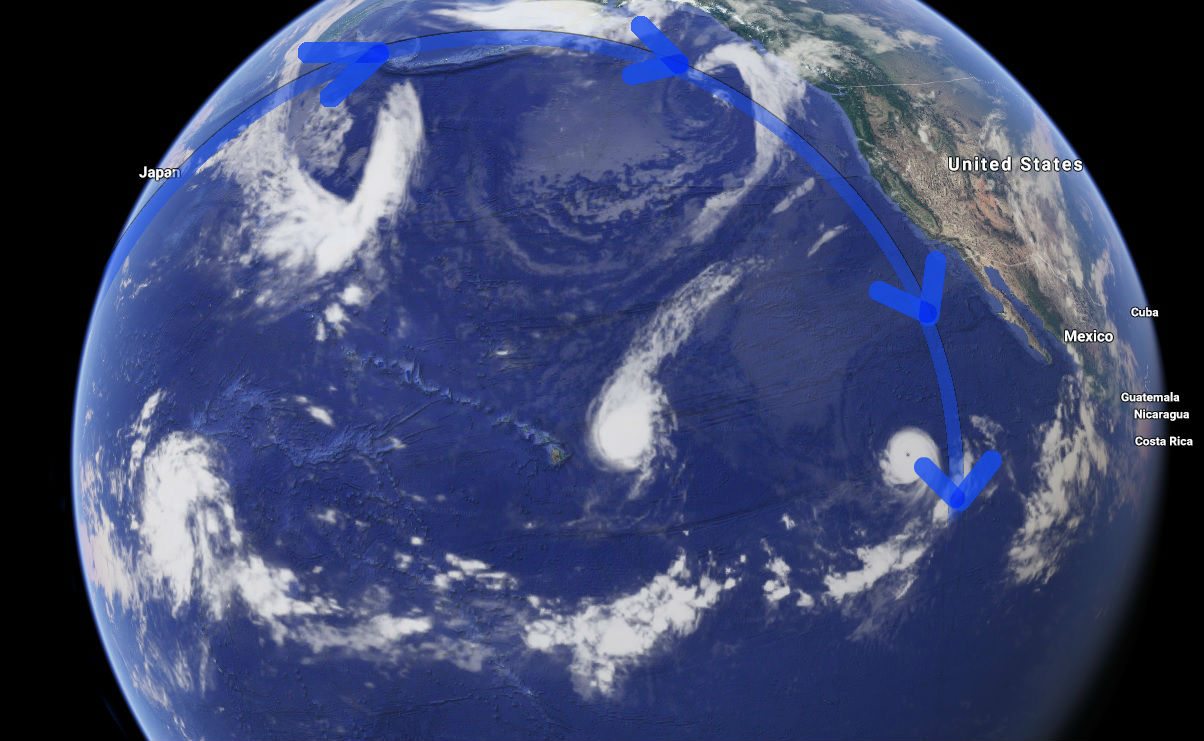
The Fleet Science Center building will be closed on Saturday, April 27, for our Annual Gala Fundraiser.

Image: Google Maps
What does Earth's rotation have to do with ocean temperatures off San Diego?
The average water temperature off Scripps Pier in September is 66 F. Follow San Diego’s line of latitude (32.7 N) over to Charleston, SC, and you will experience an average water temperature of 82 F. The sun’s rays hit both locations at the same angle, so what other factors contribute to the difference in water temperature?
The quick answer to explain the difference in coastal water temperature is to track the water’s path. Ocean water off San Diego comes from Alaska. Ocean water off Charleston comes from the Caribbean. This explanation opens additional questions, like why does water move up the coast on the east but down the coast on the west?
You can explore global ocean circulation through density experiments and through the phenomenon known as the Coriolis effect:

Coriolis Fountain. Image: Hector Maciel, YouTube
Need additional visuals to support the Coriolis effect? Use imagery of hurricanes and typhoons in both the Northern and Southern hemispheres. What is similar? What is different? What direction do each spin?
Resources:
NOAA:Average Water Temperatures, South Carolina and Georgia
NOAA:Average Water Temperatures, Southern California
NOAA: Surface Ocean Currents